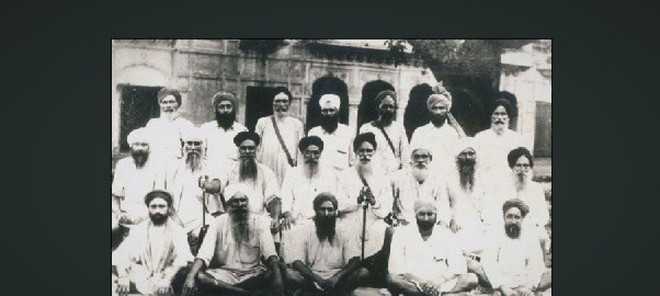The saga of the Ghadar movement
Jaspal Singh
Raghbir Singh is the editor of one of the oldest Punjabi literary magazines, Sirjana, which he started more than half a century ago. He has also written or edited half a dozen books of Punjabi literary criticism. He lives at Vancouver in British Columbia where he chairs the International Jury of the prestigious Dhahan Prize. Ghadar Party Lehar: Sankhep Itihas (A Brief History of the Ghadar Party Movement) is his latest book. The project of penning an authentic account of this movement was assigned to him by the Department of Information and Broadcasting, Government of India, which he accomplished with due élan and editing skill.
The Hindustan Ghadar Party came into existence in 1913 at Astoria, Oregon, USA, where Sohan Singh Bhakna, Lala Hardyal, Pt Kanshi Ram, Kesar Singh, Jawala Singh Thathian, Sant Wasakha Singh, Pt Jagat Ram Hariyana, Kartar Singh Sarabha and many others joined it. All of them had lived on the West Coast of America for a few years now and had weathered the humiliation and social discrimination for being the citizens of an Asian slave country (India). They were taunted by white Americans as ‘coolies’ and ‘rag heads’ and were not welcomed in restaurants and other public places. Very few Indian workers could speak English in a sustained manner. So they could not properly respond to their persecutors. Other Asian workers like the Chinese and the Japanese were not treated as shabbily as the Indians since they were not citizens of slave countries. Consequently, the workers, whose number on the West Coast of America and Canada was now nearly 10,000, thought of giving up their jobs and sail back to India en mass so that they could bring about a ghadar (revolution) in India to throw out the British and declare India a sovereign democratic republic on the American pattern.
As soon as the First World War broke out in 1914, thousands of Ghadaris came to India to launch an armed up-rising against the British with the help of Indian soldiery that was still stationed in cantonments in North India, particularly in Punjab. Most of the British Indian Army had been dispatched to Middle East and European Fronts to fight the War. The Ghadaris took it for the most opportune time for hitting hard the colonial machine in India and thus liberating the country from the shackles of slavery.
Sohan Singh Bhakna, who had been elected as the president of the Ghadar Party, reached India along with others to lead this revolutionary movement. They fixed a specific date of 1915 for an all-out war against the British. Unfortunately, the British intelligence agencies got wind of it. In a pre-emptive drive, they swooped on the revolutionaries, arresting hundreds of them. In the subsequent trials known as Lahore Conspiracy Cases, dozens of Ghadaris were hanged and many others were condemned to life-imprisonments in the Andaman Nicobar cellular jail (Kalapani). Kartar Singh Sarabha, Vishnu Ganesh Pingle and five others from Punjab were hanged in the first Lahore Conspiracy Case. There were four other such cases in which dozens others were hanged.
Incidentally, the passengers of the Komagata Maru, who were not allowed to land in Canada, reached Budge Budge Ghat near Calcutta. All these passengers had also come under the influence of the Ghadar ideology. They were regularly reading the Ghadar Akhbar brought out by the Ghadar Party from San Francisco. Eighteen of these passengers were shot dead on their arrival in India. The others were taken to Punjab to be imprisoned or confined to their villages. In course of time, they played a very important role in the freedom struggle of India.
The Ghadar movement was the first attempt by Indians for complete independence (pooran swaraj) from British colonialism. At that time even Mohan Das Karam Chand Gandhi (who had not become a Mahatma yet) was an admirer of the British and he even tried to help them during the First World War under the illusion that they would grant Home Rule status to India after the War. But the Indians, instead, got the Rowlatt Act and the Jallianwala Bagh massacre. Hence after this, Gandhi became an inveterate adversary of the British Empire and launched several non-violent movements against the colonial rule. However, the ideology of the Ghadaris was at variance with these perceptions.
The Ghadar movement was absolutely nationalistic and secular as Hindus, Muslims and Sikhs joined it with equal passion. Raghbir Singh Sirjana weaves a coherent and readable narrative of this saga of indomitable courage and sacrifice.









